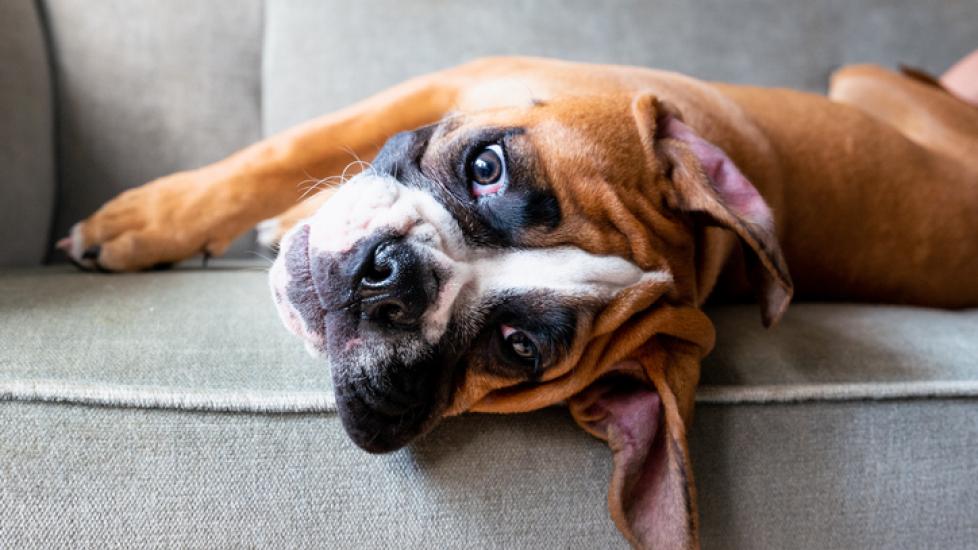Reverse Sneezing: Understanding and Addressing a Common Canine Concern
Nestled within the symphony of pet parenting, there are moments that can catch even the most seasoned dog owners off guard. One such occurrence is when Fido starts to “reverse sneeze”—a phenomenon that may leave you scratching your head or feeling concerned for your furry friend’s well-being. Reverse sneezing, as its name suggests, is not the typical sneeze we often associate with dogs (or humans) but rather an unusual respiratory event that warrants attention and understanding. In this article, we delve into what reverse sneezing is, why it happens, how to recognize it, and what steps you can take to alleviate these episodes if they occur.
Understanding Reverse Sneezing
Reverse sneezing, also known as paroxysmal respiration or pharyngeal gag reflex, is characterized by a series of rapid, forceful breaths through the nose accompanied by snorting or gasping sounds. Unlike regular sneezes which expel air from the nasal cavity, reverse sneezes actually draw air inward, creating a distinct sound similar to snuffling or wheezing. This condition is relatively common among certain breeds like Bulldogs, Pugs, Boxers, Shih Tzus, and other brachycephalic (short-nosed) dogs due to their anatomy, which predisposes them to breathing difficulties. However, any breed can experience reverse sneezing at some point in their lives.
Causes of Reverse Sneezing
The exact cause of reverse sneezing remains somewhat of a mystery; however, veterinarians have identified several factors that might trigger these episodes. Foreign objects or irritants in the throat, allergies, postnasal drip, infection, or excitement can all be potential causes. Additionally, the structure of a dog’s upper airway plays a role, particularly in brachycephalic breeds where the soft palate is longer and can sometimes obstruct the back of the throat during inhalation.
Recognizing Reverse Sneezing Episodes
If you suspect your dog is experiencing a reverse sneezing episode, look out for these signs:
1. Inward Snorting: Your dog will make a distinctive snorting noise while drawing air into his nostrils instead of pushing it outwards.
2. Gagging Sound: A gagging sound may accompany the reverse sneezing as the dog tries to clear his throat.
3. Open Mouth: The dog may open his mouth wide during the episode, trying to help himself breathe more easily.
4. Spinal Arching: Some dogs arch their backs or extend their necks to try and relieve pressure on their throats.
5. Duration: Each episode typically lasts only a few seconds to a minute before resolving itself without intervention.
What to Do During a Reverse Sneezing Episode
While reverse sneezing is generally not life-threatening, it can be alarming to witness. Here’s what you should do:
1. Stay Calm: Panicking can exacerbate the situation, so remain calm and composed.
2. Hold Firmly: Gently hold your dog’s muzzle closed momentarily to prevent him from inhaling too deeply. This helps reduce the intensity of the spasms.
3. Encourage Exhalation: You can also gently blow into your dog’s nostrils to encourage exhalation, which may stop the reverse sneezing cycle.
4. Wait It Out: Most cases resolve quickly on their own, so simply wait until the episode subsides naturally. If it persists, seek veterinary advice.
Prevention and Treatment Options
To minimize the frequency of reverse sneezing episodes, consider the following strategies:
1. Keep Environments Clean: Reduce allergens and irritants in your home environment by vacuuming regularly, using HEPA filters, and removing carpeting.
2. Regular Checkups: Schedule routine visits with your vet to monitor your dog’s health and address any underlying issues early on.
3. Maintain Good Hygiene: Regular grooming can help keep the dog’s face, ears, and throat free from debris that could trigger reverse sneezing.
4. Watch Diet: Monitor your dog’s diet and weight, as obesity can worsen respiratory problems.
Should reverse sneezing persist despite these measures or seem severe, consult with a veterinarian who can recommend treatment options tailored to your dog’s specific needs. These might include medications for allergies or inflammation, surgical interventions to correct structural abnormalities, or environmental changes to manage triggers.
Conclusion
Reverse sneezing is a common yet peculiar occurrence in our beloved pets that demands patience, understanding, and occasional intervention. By recognizing the symptoms, knowing what to do during an episode, and taking preventive measures, we can ensure our dogs live happy and comfortable lives, regardless of these minor respiratory hiccups. As always, communication with your veterinarian is key to providing the best care for your four-legged companion.
